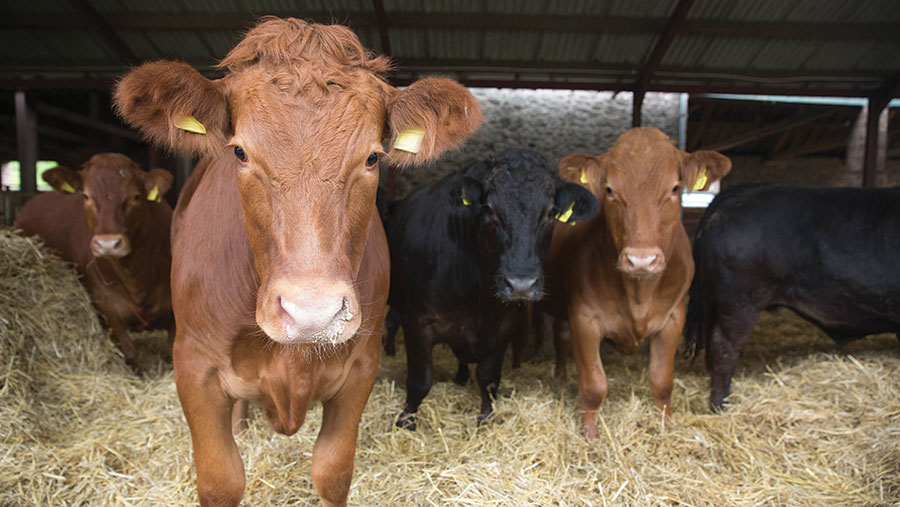Business Clinic: What to know when renting out cattle housing
 © Tim Scrivener
© Tim Scrivener Whether you have a legal, tax, insurance, management or land issue, Farmers Weekly’s Business Clinic experts can help. Here, Jack Mitchell of Carter Jonas advises on letting surplus buildings for cattle housing.
Q. I am considering renting out some cattle sheds on my farm. What should I charge? I can submeter the electricity and water so that would be charged on top. What else should I consider and what should a brief agreement cover?
Allowing someone else to make use of temporarily or permanently unused farm buildings can be a good way of generating income with relatively low input. Allowing another farmer to keep their cattle in them is quite a common way to do this.
There are two principal ways to structure this and different considerations will apply.
You firstly need to establish who is going to look after the cattle. If the owner of the cattle has sole responsibility for them, and exclusive occupation of the building(s), the best option would be to put in place a tenancy agreement to cover the terms of the arrangement.
See also: Business Clinic – Is solar development still worth pursuing
In this situation, a fundamental factor will be the length of occupation. You should consider whether you need to use the buildings for other storage purposes during the spring and summer months, when the cattle will most probably be grazing.
If this is the case, you need to ensure that there is an obligation for the manure to be cleared out by a certain date. It’s worth noting here that, if you will not be letting any land with your cattle sheds, you may wish to include in the arrangement that some of the manure is to be spread on your land.
In terms of what you should charge, it’s difficult to say exactly without knowing where you are in the country, and I would recommend speaking to a local expert, who will be able to specify market value depending on the location and condition of the barns, and the terms of the agreement.
I am based in the West Country and I would normally expect, depending on the quality of the buildings and the livestock involved, a rate falling in the region of £1 a head a week.
Payments are also sometimes calculated on a square footage basis; these are typically in the region of 50p/sq ft/year. Demand is generally good for cattle sheds in livestock areas, but it is very dependent on location.
If you decide to go down the route of a tenancy, it is worth having this drawn up properly so that the terms of the occupation are formally documented and both parties know where they stand with regard to bringing the agreement to an end when required.
The other option would be an arrangement on a “bed-and-breakfast” basis. In this case, you would undertake to provide the silage, feed and bedding and to look after the stock.
This second option may offer advantages from a tax perspective, since you will be providing a service rather than renting out space – your accountant will be able to advise based on your specific circumstances.
Whichever structure you go for, you also need to consider TB, repairs and insurance.
You should ascertain the TB status of any prospective occupier’s stock and bear in mind the rules for pre-movement testing depending on the proximity of their holding to the buildings in question.
In terms of repairs, it would typically be your responsibility to maintain the buildings.
Finally, you should inform your insurers of the proposed occupation of the buildings by a third party.
Do you have a question for the panel?
Outline your legal, tax, finance, insurance or farm management question in no more than 350 words and Farmers Weekly will put it to a member of the panel. Please give as much information as possible.
Email your question to FW-Businessclinic@markallengroup.com using the subject line “Business Clinic”.

